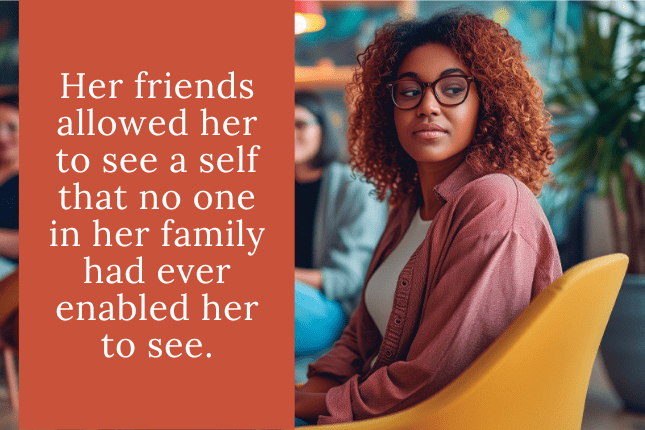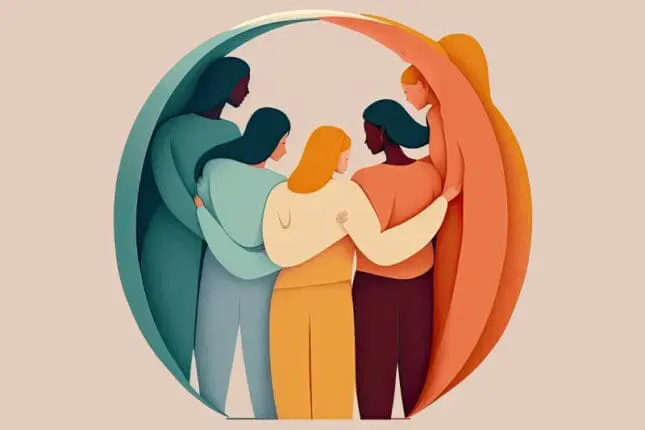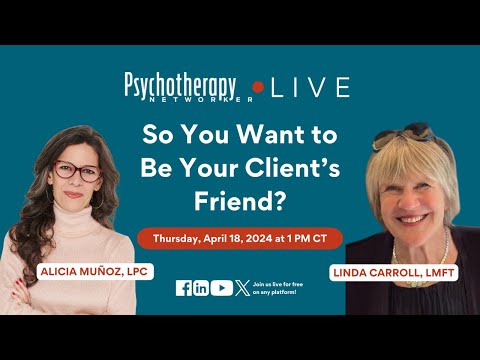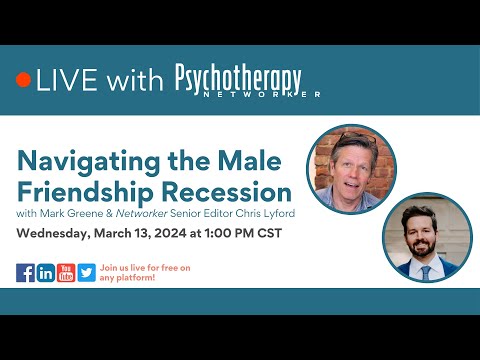When Liz and Dan took their usual places in Russell Haber’s consulting room, Liz made none of her customary attempts to ease into the hour with small talk. “I’ve begun to wake up thinking of suicide,” she told Haber, a family therapist who’d been working with the 34-year-old law student and her husband for four months to try to bridge the vast distances and silences between them. She’d tried all of Haber’s suggestions for communicating directly, negotiating requests, and reversing roles. But no matter what she did, Liz told Haber in her small, exhausted voice, Dan persisted in treating her like a stranger, except on those increasingly rare occasions when he felt like having sex.
“But it’s not just about you,” Liz added abruptly, turning to her husband. In a soft monotone, she began to talk of how utterly worthless and alone she felt, not only because of her husband’s remoteness, but also because nobody who was important to her gave her the support or affirmation she craved. Not her parents, who’d always treated her as if she had no needs, nor her younger sister, who seemed to view her primarily as an ear for her own troubles. Even her own two kids, she said despondently, seemed to prefer Dan’s company to hers. Haber listened quietly. He’d heard about all these missed connections before, and was sobered by the accuracy of his client’s analysis. It was time, clearly, to look beyond the family.
“What about friends?” he asked.
Surprised, Liz admitted that, yes, she did have three friends: Joanne, a member of her church group; Connie, a neighbor; and Elise, one of her law school instructors. But no way could she expect anything more from these women, she told Haber, because she was sure they already viewed her as “insatiably needy.” In fact, she was surprised they hadn’t already dropped her cold. Since she could give nothing to these friends, why would they want to give anything back to her?
Haber had a sudden, unorthodox idea. “Why don’t we find out?” he asked. “Let’s invite your friends to our next session.”
The following week, with Joanne, Connie, and Elise in the therapy room, and Dan sitting in to listen, Haber asked Liz to tell her friends how she imagined they saw her. “Thirsty,” said Liz. “Around all of you, I try to watch myself so I don’t show too much of that thirsty side.”
There was a puzzled silence. “Is she right?” Haber asked the three women. “Could each of you tell Liz how you actually view her?” When Liz heard the words the women used to describe her—loving, nurturing, intuitive, empathetic—she shook her head in disbelief. How could her friends use those preposterous words, she wanted to know, when they knew that she was rife with problems and insecurities?

Joanne spoke up first. “Liz, I want you to understand something—I need your friendship as much as you need mine.” Connie added that she wanted to be closer to Liz, but she couldn’t as long as Liz persisted in viewing herself as unworthy of her friendship. “I want you to see yourself differently and me differently,” elaborated Elise. “You’re allowed to ask for support. That’s what being friends is about.”
Liz listened and nodded, her eyes welling with tears. Later, she told Haber that at that moment, she understood for the first time that she was more than a forsaken, perpetually yearning child; within her might also reside a competent, lovable woman who had something of value to give, and, moreover, to whom others wanted to give. Recalls Haber, “Her friends allowed her to see a self that no one in her family—not her husband, her parents, or her sister—had ever enabled her to see.”
Several sessions later, Liz reported that her friendships with two of the women were becoming more intimate and that her despair had lifted. Dan admitted, then, that during the session with Liz’s friends he had felt a spasm of envy, because he realized that he was without friends, without, in fact, any source of intimacy in his life. Haber noticed something else: while the relationship between Liz and Dan was still troubled, they’d now begun to talk of possibilities in their marriage, rather than only disappointments. In Haber’s view, Liz’s admission of friends into her life had broken the couple’s paralyzing stalemate, both by multiplying Liz’s sources of affirmation and intimacy and by spurring Dan to recognize his own buried need for human connection.

By now, few family therapists regard the family as a self-contained universe. But for all the lip service paid to extra-family influences, the field has been strangely silent about one of our most enduring links to emotional health and plain old pleasure in living—having friends. While therapists may feel deeply the necessity of friendship in their own lives, they’re unlikely to stumble on anything in the mental health literature that validates this experience, or that spurs them to help clients deepen these connections. On the contrary. Psychoanalyst Helene Deutsch darkly warned back in the ’50s that women who had close female ties after marriage were probably deeply neurotic, and even Murray Bowen focused mainly on the limitations of friends, calling them “poor substitutes for one’s own family” in cases of cutoff from parents.
“Friendship is rarely seriously considered by family therapists, either as a system of its own or as a force impinging on a family,” says Charles Fishman, executive director of the Institute for the Family in Princeton, New Jersey. Instead, he says, the field still tends to doggedly overfocus on the marital dynamic, which he calls “the Oedipal Complex of family therapy.”
It’s a strange myopia, given the seismic shifts in the social order that have produced a nation of people who, now more than ever, need their pals. These days, marriage, that hoped-for antidote to our existential isolation, takes up less of our lives than it used to. We’re pairing up later, splitting up faster, remarrying less often, and more often than ever avoiding the entire quagmire in favor of permanent singleness.
But friendship poses its own, distinctive challenges. Unlike ties with intimate partners and other family members, our connections to friends can be exceedingly fragile. Because friendship is an elective bond rather than an ascribed one, there are no formalized rituals, rules, or obligations to ground or support the relationship. Expectations are often fuzzy, feelings easily hurt and, ultimately, a friend can walk away at will, with no legal obstacles to slow the exit, no “friendship enhancement weekends” to shore up the bond, no Greek chorus of family members beseeching us to stop being so damn silly and make up. Even as people depend on their friends as never before, friendship is still considered somewhat expendable by our society.
“In our culture, kinship falls into the realm of the sacred, while friendship remains in the arena of the secular,” observes San Francisco therapist Lillian Rubin, author of Just Friends, a study of American friendship patterns. “Even though it may be a friend, not a relative, who takes you to the airport or brings you soup when you’re sick, the ethos in our society hasn’t changed: kin is forever, friends come and go.” In this climate of mixed messages and largely unarticulated need, how can clinicians help their clients sort out the meaning and place of friendship in their own lives and help them get the sustenance they seek from it?
It’s trickier than it seems, the business of finding and keeping friends. The emphasis on our “freedom of choice” in making pals, in contrast to the twin snares of chance and obligation that entangle us in family bonds, makes friendship seem a bit like grocery shopping, as though we can simply survey the aisles of potential buddies and pluck a few off the shelf at will, like so many bags of attractively packaged potato chips. But this consumer vision of friendship leaves no room for the realities of shy or abrasive personalities, mismatches of desire, individual abilities to negotiate intimacy and conflict, or being new in town—again. Many people desperately want to make friends but haven’t yet learned to do it well, or repeatedly strike up friendships only to watch them fade or shatter.
As our relentlessly mobile and self-reliant society renders friendship simultaneously more vital to our well-being and harder to pull off, clinicians are more frequently grappling with the complexities of friendship in the therapy room—and the effort to do so seems profoundly worthwhile. Because friends care for us outside the emotional force field of kinship, they have the capacity to both champion our changes and accept us just as we are. This offering—love without pressure—may be what’s most deeply and enduringly healing about our bonds with friends. For it’s through them we can experience, with gratitude and great relief, that we’re irrefutably individual and that still, we belong.
Main Illustration by Misho
Second Illustration by Henjon
Marian Sandmaier
Marian Sandmaier is the author of two nonfiction books, Original Kin: The Search for Connection Among Adult Sisters and Brothers (Dutton-Penguin) and The Invisible Alcoholics: Women and Alcohol Abuse in America (McGraw-Hill). She is Features Editor at Psychotherapy Networker and has written for the New York Times Book Review, the Washington Post, and other publications. Sandmaier has discussed her work on the Oprah Winfrey Show, the Today Show, and NPR’s “All Things Considered” and “Fresh Air.” On several occasions, she has received recognition from the American Society of Journalists and Authors for magazine articles on psychology and behavior. Most recently, she won the ASJA first-person essay award for her article “Hanging Out with Dick Van Dyke” on her inconvenient attack of shyness while interviewing. You can learn more about her work at www.mariansandmaier.net.












